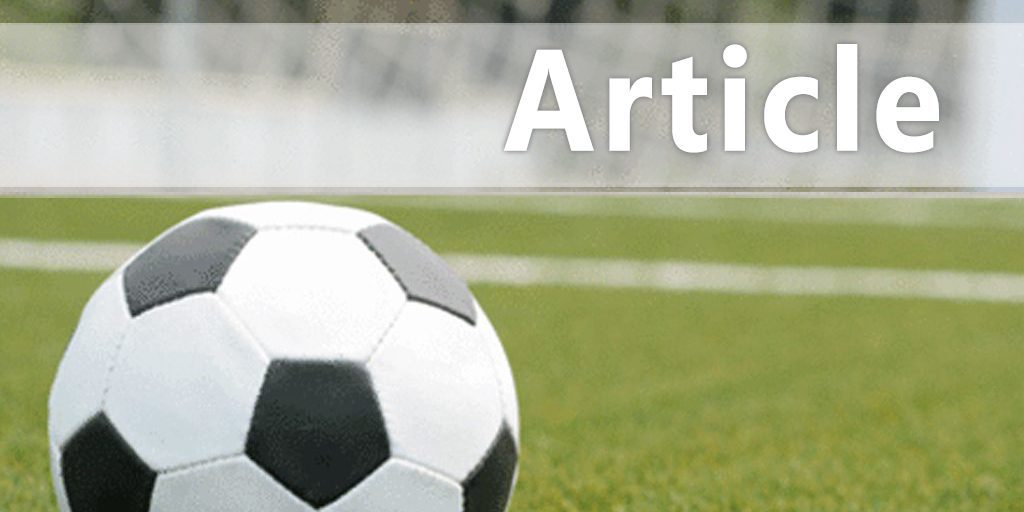|
4 Defensive Pressure and Cover Drills By: Joseph Luxbacher Originally Published in: Soccer - Steps to Success - Human Kinetics
Organize into two teams of two players each. Use markers to outline a 20- by 25-yard field area with a 4-yard-wide goal centered on each end line. Begin with a kickoff from the center of the field. Each team defends a goal and can score goals by kicking the ball through the opponent's goal below knee height. Do not use goalkeepers. Teams switch from attack to defense, and vice versa, on each change of possession. Teammates must play in combination defensively to ensure adequate pressure and cover. The first defender applies pressure on the ball while the second defender gets in position to prevent a penetrating pass through the space beside and behind the first defender. The second defender must also be in a position to immediately challenge for the ball should it be passed to a nearby support attacker. Play for 15 minutes continuously and keep a tally of goals scored. To Increase Difficulty for Defending Team To Decrease Difficulty for Defending Team Success Check for Defenders Score Your Success Defensive Pressure and Cover Drill 2 Designate a team of two defenders and a team of four attackers. Use markers to outline a 15- by 15-yard playing grid. The attacking team attempts to keep the ball from the defending team within the grid. The attacking team scores 1 point each time attacking players complete six consecutive passes, and 1 additional point for each pass completed that splits (goes between) the defenders. This is referred to as a killer pass. The defending team scores 1 point each time defenders win possession of the ball or force the attackers to play the ball outside the field area. If the defenders win the ball, they immediately return it to the attacking team, and the game continues. Play for 10 minutes and keep track of points. To increase Difficulty for Defenders To Decrease Difficulty for Defenders Success Check for Defenders Score Your Success Defensive Pressure and Cover Drill 3 Form two teams of three players each. Play on a 20- by 30-yard field with a 4-yardwide goal centered on each end line. One team has possession of the ball to begin. The team with the ball attacks with three players; the opponents defend with two field players and a goalkeeper. The attacking team scores 1 point by kicking the ball directly to the opposing goalkeeper. The defending team attempts to win the ball and prevent the opponent from scoring. If a defending player steals the ball, she must pass it back to her goalkeeper before the team can initiate an attack on the opponent's goal. The goalkeeper can then move forward to join her teammates in the attack. One player on the team that lost possession retreats into the goal to be the goalkeeper. The remaining teammates assume the roles of first and second defender. Teams switch between attack and defense with each change of possession. Change of possession occurs when a defender steals the ball, when a point is scored, or when the ball leaves the playing field last touched by the attacking team. Teammates alternate playing goalkeeper. Play nonstop for 15 minutes and keep track of points. To increase Difficulty for Defenders To Decrease Difficulty for Defenders Success Check for Defenders Score Your Success Defensive Pressure and Cover Drill 4 Play within a 20- by 20-yard field area. Two defenders stand in the center of the area; one attacker gets in position at the midpoint of each sideline for a total of four attackers. The server (coach) stands outside the field area with an ample supply of balls. To begin, the server passes a ball to one of the attackers. The player receiving the ball (first attacker) attempts to dribble directly across the square to the opposite sideline. The two defenders work in combination to deny penetration. The first defender steps to confront the dribbler while the second defender positions to provide cover (support) for his teammate. If the dribbler cannot immediately penetrate past the defenders, he passes the ball diagonally to an attacker on a different sideline. After receiving the ball, that player becomes the first attacker and immediately tries to dribble across the grid to the opposite sideline. Defenders immediately adjust position to deny penetration by the new attacker. If a defender wins the ball or the ball is kicked out of the area, the server immediately plays another ball to a different attacker, and the exercise continues. An attacker who successfully dribbles across to the opposite sideline scores 1 point. The attacker returns to his original sideline by running along the outside of the grid. In the meantime, the server plays a ball to a different attacker, and the game continues. Play for five minutes; then designate two different defenders and repeat the drill. Play several rounds so that each player takes a turn as a defender. To increase Difficulty for Defenders To Decrease Difficulty for Defenders Success Check for Defenders Score Your Success |





